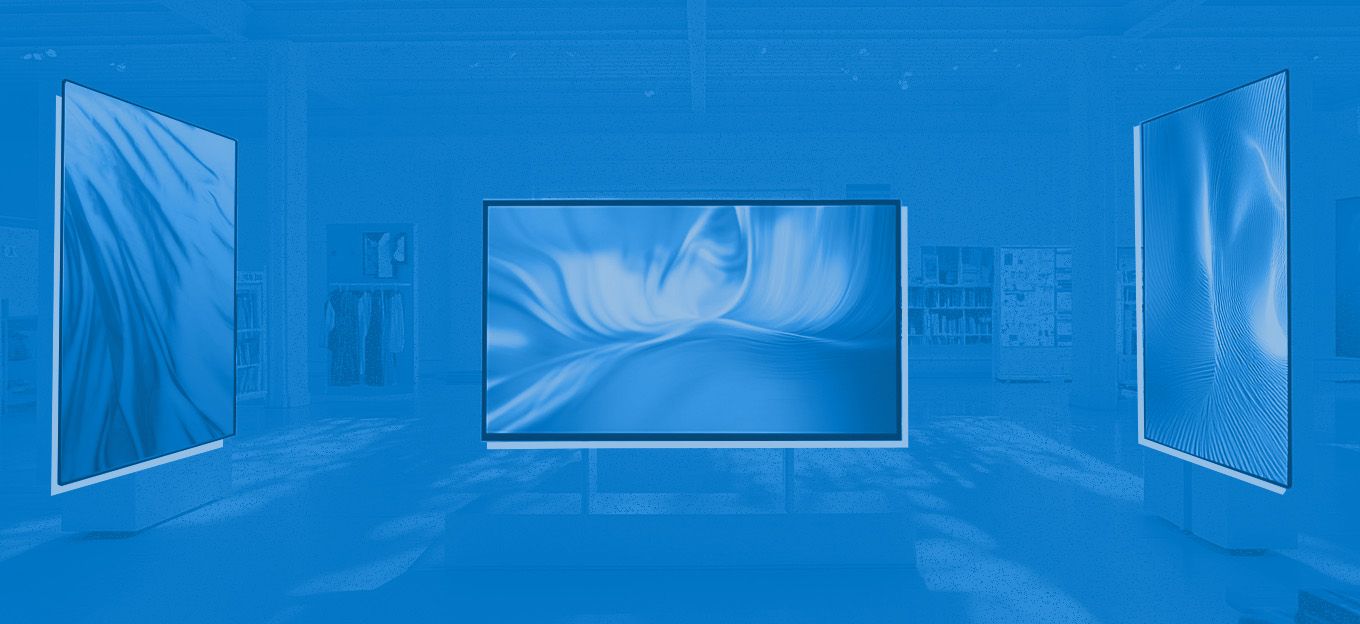
POND IoT Last Updated: December 23, 2024
Collected at: https://www.iotforall.com/digital-signage-multi-network-connectivity
Billboards have come a long way since the hand-painted glory days of the Model T era. Today, out-of-home advertising is increasingly digital. These IoT signs may appear in large-format displays like billboards and urban panels, in public spaces like bus stops and malls, or even at the point of purchase.
No matter where you deploy it, digital out-of-home (DOOH) advertising allows you to change your display to meet the moment’s needs. You can test multiple versions of your ad to choose the one with the strongest engagement.
You can customize content based on external conditions, from location to weather. You may even be able to personalize ads based on who’s viewing them.
All of these benefits depend on reliable cellular connectivity, however. Given the patchwork nature of mobile network operator (MNO) coverage—and inevitable network outages—reaching 100 percent uptime can be a challenge.
The solution is to avoid dependence on any one MNO. Here’s how digital signage providers can solve all their connectivity problems with a single technology: the multi-network SIM.
The Trouble with Traditional SIMs for Digital Signage
Reliability isn’t the only challenge associated with cellular connectivity for DOOH advertising. There’s also the issue of complexity.
The SIM card is the technology that manages the connection to an MNO’s network. Traditional SIM cards contain a single user profile. That profile identifies your device as a paid subscriber to the cellular network.
With a single profile on your SIM, however, you can only connect with a single network. To achieve reliable connectivity through failover, then, you have to load multiple SIMs into your IoT signs.
Additionally, digital signage providers tend to operate across wide geographic areas. Verizon may cover some of your footprints, while AT&T covers another portion.
All of these factors add up to a single source of operational complexity: You have to manage relationships with multiple MNOs. That adds countless hours of work for your billing, operations, and technical support departments.
It also creates natural data silos, since you can’t share data across networks. In other words, the traditional, single-profile SIM creates a lot of operational complexity. That, in turn, becomes quite costly in terms of both time and resources.
The solution is to use a single SIM that connects you to all the cellular networks in your business footprint—but there are two ways to accomplish this goal, and one of them is often more reliable than the other.
Multi-Network vs. Multi-IMSI SIMs
An international mobile subscriber identity, or IMSI, is the numerical identifier that gives you access to a mobile network. One way to achieve multi-network connectivity is to use a SIM that contains several profiles, each represented by a different IMSI. This solution is called a multi-IMSI SIM.
The trouble with a multi-IMSI SIM is that it takes time to transition from one network to the next. The user experience is a lot like physically swapping out a hardware SIM card—when your device switches networks, it will take anywhere between 30 seconds and five minutes to register itself with the new system.
For most digital signage use cases, you’ll get more consistent connectivity with a multi-network SIM. These are cellular solutions—physical SIM cards or software SIMs—that connect to many networks using the same IMSI. This is possible thanks to a well-developed system of global roaming agreements between MNOs.
With multi-network, single-IMSI SIMs from the right IoT connectivity provider, you’ll get widespread cellular coverage that rivals a multi-IMSI SIM—without the registration delays that come with swapping profiles.
In addition to seamless connectivity, multi-network SIMs give digital signage providers a range of benefits:
- Your digital displays will automatically connect to whichever cellular signal is strongest to avoid connectivity loss. That improves uptime and simplifies deployment.
- The device selects the strongest network, so you don’t have to spend time manually connecting devices (although connectivity platforms do give you that option, too).
- Because you don’t have multiple SIMs for different markets, you greatly simplify inventory management. In other words, you get a single SKU for global deployment.
- Multi-network SIMs come from providers who may also give you access to a connectivity management platform. This allows you to manage signage remotely, in any location. It also allows you to handle support yourself, no more waiting on hold with MNOs.
- You can pool data across carriers and manage a single vendor relationship, instead of dealing with silos and lots of MNOs.
- Real-time updates allow you to instantly swap messages as the need arises (e.g., new promotions, upcoming events, etc.)
These benefits translate into lower costs. An IoT connectivity partner can cost you up to 20 percent less than a direct MNO relationship—provided you choose the right one. Here’s what to look for.
How to Implement Multi-Network Coverage in DOOH Advertising
The only way to bring the benefits of multi-network, single-IMSI SIMs to your digital signage company is to work with a connectivity partner. Look for a specialist in IoT connectivity, along with the following features:
- Your choice of multi-network, single IMSI, or multi-IMSI SIMs
eSIM and physical formats - Access to hundreds of networks around the globe
- Support for technologies including 2G, 3G, 4G/LTE, 5G, and satellite
- An easy-to-use connectivity management platform
- Responsive, 24/7 technical support
- A single dedicated account manager who knows your business
With a multi-network, single-IMSI SIM and a proven IoT connectivity partner by your side, you can quickly recoup the costs of replacing SIMs across your entire signage fleet. After that, you’ll enjoy less complexity, stronger service, and more control over your digital signage—wherever you happen to deploy it.

Leave a Reply